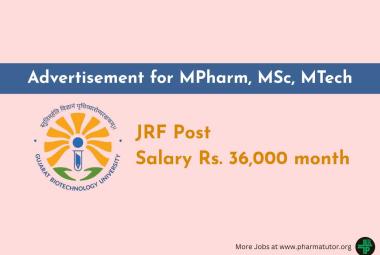AUTHORS :
1Charles Owusu-Aduomi Botchwey*, 2Yaa Kusi-Ameyaa, 1Isaac Adom-Konadu, 1Ebenezer Dzinpa Effisah
1 University of Cape Coast
2 University of Professional Studies-Accra
chaboat08@yahoo.com*
ABSTRACT
Healthcare provision aims at ensuring that clients who visit a healthcare facility are provided with affordable and quality healthcare aimed at promoting the well-being of the people in the catchment areas of the healthcare facility. Considering the pivotal role played by nurses in helping deliver quality healthcare, one of the most pertinent issues has been the question of how nurses perceive motivation and how best to motivate them. The study aimed at empirically evaluating the current perception of nurses in the Korle-Bu Teaching Hospital on motivation and job satisfaction and how to improve the motivation of nurses aimed at promoting quality healthcare. The study adopted a qualitative approach through in-depth interviews of a total of twenty (20) respondents including seven key informants purposely selected due to their role in the implementation of motivation policies in the Korle-Bu Teaching Hospital Community. This study employed the case study design. The study found that mismanagement of the hospital’s resources was one of the challenges of motivation at the Korle-Bu Teaching Hospital. Again, the study found that inability of nurses to express their worries and issues concerning their welfare affected motivation and job satisfaction largely. Furthermore, the study found that the hospital did not have any medical plan for nurses at the Korle-Bu Teaching Hospital. The study recommends that employees’ views must be sought when it comes to motivation to find out exactly what their needs are but not to impose anything on them in the name of motivating them. The study also recommends that nurses’ preferences for different benefits vary with their ages, marital status and so on. It is important for the hospital to “customise” their benefit packages and use them to their best advantage. It is important to mention that for motivation to be able to achieve its intended purpose, there is the need for the hospital to identify the individual needs in order to satisfy them accordingly to promote job satisfaction.
INTRODUCTION
An organisation is any group of people working together to achieve or meet a stated objective or goal. Management is therefore responsible for the co-ordination of technological, financial and human resource prerequisites for the achievement of these goals or objectives. Every organisation, irrespective of how small or large may want to increase its production to an appreciable level yet, job satisfaction and performance are taken lightly especially in some Ghanaian companies. This compels some organisations to invest heavily in complex technological systems, machinery and capital; a situation which usually leads to the neglect of the human aspect of the organisation, namely the employees (Attrams, 2013). It is worth noting that the factors that usually affect productivity tend to be more human-related. One can invest in the best of technologies but if employees engage in wastage of resources, absenteeism, pilfering, and a general lack of commitment towards work, productivity will hardly increase in such an organisation. Thus, the employees of an organisation are an indispensable condiment without which there can be no increase in productivity as well as the realisation of the aims and objectives of the organisation (Yavuz, 2004). This point has been forcefully brought home by Eddie (1981) that “without the meanings that are provided by the human mind, organizations are only piles of stones and metal and blobs of ink on pieces of paper”. Consequently, it is of prime importance for all organizations, big or small to be concerned about the satisfaction and well-being of employees.
It goes without saying that employees nit-pick about their work due to several issues (Banks, 2010). These grievances frequently arise from the inability of the workers to achieve set tasks, issues relating to equipment, and motivation among others (Lussier, 2008; Attrams, 2013). In general, motivation is seen by researchers and commentators as the most crucial of these factors since there are instances where the general inadequacy or lack of equipment or other considerations have not deterred a motivated workforce from achieving set targets in organisations (Kinicki &Kreitner, 2009; Hafizah et al., 2011). Besides being the most important, motivation is yet regarded as the most difficult to manage. According to Griffin and Moorhead (2007), it is very difficult to determine what motivates employees at a point in time as what will motivate one employee may not necessarily motivate another. This is in sharp contrast to a lack of ability of employees which can be improved through a skills training programme, or an inadequacy of equipment or technology which can easily be provided.
Research shows that motivation engenders employee satisfaction which elucidates how content employees are regarding their work (Kumari & Pandey, 2011; Armstrong, 2007). Ensuring that workers are satisfied with the work they do is crucial since lack of satisfaction engenders laziness and moderates commitment. Besides, a lack of satisfaction could also be an attributed reason behind employee turnover and why some workers leave their jobs for “better ones”. Sometimes due to lack of satisfaction, workers quit from one sector to another such as from the public to the private sector and vice versa. Sometimes too, the movement is from one profession to another and even from one country to another, in search of greener pastures (Tella et al., 2007).
The health sector is perhaps the most important sector in every country. This is because it is the sector upon which all other sectors depend. No one can go to work if he or she is sick. As a result, health workers play very important roles in the development of every nation since they treat the sick and help prevent diseases (Ghana Health Workforce Observatory, 2010). When there is lack of motivation and satisfaction on the part of health workers, they tend to shirk their responsibilities, absent themselves from work, are rude towards patients and are involved in all kinds of negative behaviours, which usually affect the efficacy of health services (Ramasodi, 2010). Besides, brain drain among health workers in Africa and Ghana in particular has partly been attributed to a lack of motivation. This has come in the form of meager salaries, lack of equipment, and a lack of opportunities for self-development among others which makes workers in the health sector travel to other countries for better conditions (Saleh, 2013; Ghana Health Workforce Observatory, 2010; Bossert et al., 2004). In general, it cannot be gainsaid that if health workers are to be retained and effectively deliver health services, then there is the need to motivate them. With regards to nurses, job satisfaction and motivation, more research needs to be done.
In line with the topic, the following objectives were sought to achieve:
1. Determine the factors that contribute to motivation and job satisfaction at the Korle-Bu Teaching Hospital from the nurses’ perspective.
2. Assess the current motivational packages directed at ensuring job satisfaction for the nurses at the Korle–Bu Teaching Hospital.
LITERATURE REVIEW
Introduction
The study of motivation is concerned, basically, with why people behave in a certain way (Hanson, 2007). The basic question is “Why do people do what they do?” In general terms, motivation can be described as the direction and persistence of action. It is concerned with why people choose (Elive, 2016), a particular course of action in preference to others, and why they continue with a chosen action, often over a long period and in the face of difficulties and problems.
One of the most important and common concerns of managers is employee motivation, particularly in environments where significant financial reward is not an option, and where their staff is being over-stretched at work. Motivation in organizations can also be more difficult given the often-differing priorities and mind-sets of the artistic and administrative segments of the organisations. Building a high-performance at Korle–Bu Teaching Hospital for instance, fully engaged workforce means an organization must analyse and prepare a plan to attract and retain the best employees who will become engaged and deliver results.
Meaning of Motivation
According to Locke and Latham (2002), one of the most important factors that lead one to their goals is the drive. This drive is known as motivation. It is a zest and determination with a kind of excitement that leads one to persevere to reach greater heights, in no matter what avenue of their life; be it-personal or professional. The drive may come from an internal or external source. The individual determines this. The factors that motivate an individual keep changing as one climbs the ladder of age and maturity and also, achievement of one goal sets the ball rolling for another one to be achieved (Aziz, 2009). Thus, to be motivated is a constant need. There are times when one faces a period of de-motivation and everything seems bleak. It is then that they need to find what would motivate them back into action. For every individual there is a variable driving force. In fact, it is not just a single factor, but a combination of factors that lead people to achieve their goals. The fact is that with routine monotony steps in and then everything seems like stagnant waters. It feels like there is nothing new. Breaking this cycle of monotony has helped many bounce back with enthusiasm. This is why human resource managers create a training calendar, which will take away employees from the routine they are stuck to, as well as enhance their skills in various areas (Thompson, 2010). Others pursue hobbies during the weekend, thus giving them something to look forward to, as each week comes to a close. There are people who redefine their goals and ambitions from time to time in order to fill them with newer levels of enthusiasm to achieve greater feats.
Motivation is a predisposition to behave in a purposive manner to achieve specific, unmet needs (Buford and Lindner, 1995); an internal drive to satisfy an unsatisfied need (Essays, UK. November, 2013). According to Cole (2002) motivation is the term used to describe those process, both instinctive and rational, by which people seek to satisfy the basic drives, perceived needs and personal goals, which trigger human behaviour. Armstrong (2003), in his book “Motivation strategies aim at creating a working environment”, defined motivational factors as those tactics and strategies adopted by management in order to optimise employees performance at work, and thus improve overall productivity of an organization. According to him, they will be concerned with measuring motivation to provide an indication of areas where motivational practices need to be improved.
Subsequently, the need is connected to the motivation theory. Motivation, according to Dennis Coon, is a force within an organization that activates behaviour or directs towards a goal. In the 1950’s, the American psychologist Frederick Hertzberg, interviewed two hundred and three (203) Pittsburgh engineers and accountants and asked two “Critical incident” questions. The subjects were asked to recall events that had made them feel bad about it. Analysis revealed that, the factors that created job satisfaction were different from those that created job dissatisfaction. In his book “work nature of man”, Hertzberg identified the factors that caused job dissatisfaction and those that cause job satisfaction. He distinguished between ‘hygiene factors’ and ‘motivation factors’. He saw two (2) needs of individuals. The need to avoid unpleasantness, satisfied by hygiene factors, the need for personal growth, satisfied at work by “motivation factors” only.
When people are dissatisfied with their work or job, it is usually because of discontent with the environmental factors, and these environmental factors contribute to fringe benefits being offered in organizations. Quite apart from the benefit and moral value of an altruistic approach to treating colleagues employees as human beings and respecting human dignity in all its forms, research and observations show that the main aim of motivating employees is to make them productive and creative in the operations of an organization so that the organization can achieve its goals and objectives (Essays, UK. November 2013).
Motivation at the Workplace
Motivation of employees gives the means for survival in the form of monetary returns. In spite of this, there are various situations and circumstances that occur at the workplace that lead one downhill - down the path of de-motivation. While there are managers to ensure staff motivation, it is vital for one to also ensure that they experience motivation at the workplace.
Morgan (2013) reported that this can be done by following the various methods:
Sometimes over ambition can lead to frustrations and so ambitions should be kept in check and within real achievable targets. Be aware of the journey towards the destination. Do not be afraid to admit that guidance is required in certain areas. Gain knowledge and experience and upgrade skills in order to achieve higher targets. Maintain cordial relations at the office, avoiding the blending of personal and professional.
Importance of Motivation
One of the most important and underlying factors that drives every human being reach their goals is motivation. This includes personal, as well as professional goals and targets. In fact, if this driving force did not exist then people would live in the rut of monotony and no great discoveries or inventions would have happened. Understanding this, managers take the responsibility of motivating employees from time to time through various ways and means. One instance is by adopting soft skills training programs especially in areas such as stress management, motivation, decision-making, time management, etc.
Apart from what the management does to keep employees motivated, one needs to also bring in self-motivating factors. For instance, set personal goals such as a time-line target to purchase an asset, which can happen if work targets are met and one continues in the same job. No matter what the source, motivation is an important factor to drive once life through every challenge and stumbling block.
Motivational Concepts and Theories for Performance
The Incentive Theory of Motivation
Saqib (2015), a reward, tangible or intangible, is presented after the occurrence of an action (i.e. behaviour) with the intent to cause the behaviour to occur again. This is done by associating positive meaning to the behaviour. Studies show that if the person receives the reward immediately, the effect would be greater, and decreases as duration lengthens. Repetitive action-reward combination can cause the action to become habit. Motivation comes from two things: you, and other people. There is extrinsic motivation, which comes from others, and intrinsic motivation, which comes from within you. Applying proper motivational techniques can be much harder than it seems.
Kerr (2011) notes that when creating a reward system, it can be easy to reward A, while hoping for B, and in the process, reap harmful effects that can jeopardize your goals. Rewards can also be organized as extrinsic or intrinsic. Extrinsic rewards are external to the person; for example, praise or money. Intrinsic rewards are internal to the person; for example, satisfaction or a feeling of accomplishment.
Some authors distinguish between two forms of intrinsic motivation: one based on enjoyment, the other on obligation. In this context, obligation refers to motivation based on what an individual thinks ought to be done. For instance, a feeling of responsibility for a mission may lead to helping others beyond what is easily observable, rewarded, or fun. A reinforcement is different from reward, in that reinforcement is intended to create a measured increase in the rate of a desirable behaviour following the addition of something to the environment.
Intrinsic and Extrinsic Motivation
Intrinsic Motivation
Intrinsic motivation occurs when people engage in an activity, such as a hobby, without obvious external incentives. This form of motivation has been studied by social and educational psychologists since the early 1970s. Research by (Faye C., 2008) has found that it is usually associated with high educational achievement and enjoyment by students. Intrinsic motivation has been explained by Fritz Heider’s attribution, Bandura's work on self-efficacy, and Ryan and Deci's cognitive evaluation theory. Employees are likely to be intrinsically motivated if they:
Attribute their results to internal factors that they can control (e.g. the amount of effort they put in), Believe they can be effective agents in reaching desired goals (i.e. the results are not determined by luck), Are interested in mastering an activity, rather than just rote-learning to achieve good grades.
In knowledge-sharing communities and organizations, people often cite altruistic reasons for their participation, including contributing to a common good, a moral obligation to the group, mentorship or 'giving back'. In work environments, money may provide a more powerful extrinsic factor than the intrinsic motivation provided by an enjoyable workplace. Intrinsic motivation is the motivation that comes from inside the performer. That is, the athlete competes for the love of the sport.
Extrinsic Motivation
Extrinsic motivation comes from outside of the performer. Money is the most obvious example, but coercion and threat of punishment are also common extrinsic motivations. In sports, the crowd may cheer the performer on, and this motivates him or her to do well. Trophies are also extrinsic incentives. Competition is often extrinsic because it encourages the performer to win and beat others, not to enjoy the intrinsic rewards of the activity. Social psychological research has indicated that extrinsic rewards can lead to over-justification and a subsequent reduction in intrinsic motivation.
MATERIAL AND METHODS
The study employed the qualitative research method with a case study design. The study employed both primary and secondary sources of data. With the primary source of data, the study used an in-depth interview guide to collect primary data from respondents on the stated objectives. The study also made use of the internet, journals, articles, reports and other already published documents constituting the secondary sources of data. The study population was the entire Korle-Bu Teaching Hospital Community and the sample size was twenty (20). The study employed both convenience and purposive sampling techniques. In terms of data analysis, the study employed descriptive analysis method.
RESULTS AND DISCUSSIONS
4Description of findings
To examine nurses’ perception of motivation and job satisfaction in Ghana, nurses and other management were asked questions about:
1. Determine the factors that contribute to motivation and job satisfaction at the Korle-Bu Teaching Hospital from the nurses’ perspective.
2. Assess the current motivational packages directed at ensuring job satisfaction for the nurses at the Korle – Bu Teaching Hospital.
Determining the factors that contribute to motivation and job satisfaction at the Korle-Bu Teaching Hospital from the nurses’ perspective.
The preliminary study revealed that several factors had contributed to nurses’ motivation and job satisfaction at the Korle-Bu Teaching Hospital. The study explained that some of these factors were directly related to the various functions performed by these nurses whilst others were indirectly linked to the functions they performed as nurses. The study further found that motivation and job satisfaction of nurses at the Korle-Bu Teaching Hospital in particular, and the Ghana Health Service in general could not only be linked to either the nurses’ desire to be associated with the nursing profession or the tangible benefits such as money, gifts, among others.
A nurse in the OPD explained that in spite of intermittent agitations of salary increments and better conditions of work, if the activities and services of healthcare professionals, especially, nurses at the Korle-Bu Teaching Hospital could be given the needed recognition, quality of healthcare would be enhanced. She argue that giving paramount recognition to the needs of workers was a very important prerequisite of ensuring successful quality healthcare delivery at the Korle-Bu Teaching Hospital. She added that the crucial assessment of managerial success is its capability to produce standards satisfactory to reward the nuisances imposed upon resources contributed. She lamented that:
“Even though we work to earn our salaries, I feel that nurses equally believe in the fact that when the general public recognize our effort we will do much better in quality service delivery”.
A key informant mentioned that salary, wages and conditions of service of the nurses at the Korle-Bu Teaching Hospital had contributed immensely to motivation and job satisfaction which had led to enhanced quality of healthcare delivery. The respondent explained that regular payment of nurses’ salaries and improved conditions of service had inspired nursing workers at the hospital to contribute largely to healthcare delivery. The respondent added that in spite of increased in the salaries of the nurses, those that were ready to further their education could do so under the study leave policy instituted by the Ministry of Health through the Ghana Health Service. However, the respondent was quick to mention that in spite of the improved conditions of service, there were still dishonest nurses who were not performing up to the normal standards. The respondent opined that:
“There are some of our colleagues who are not working hard as if somebody forced them into the profession; I think there are others outside who are yearning to get this opportunity but they are not getting and others have got but they are abusing such glorious opportunity”.
A nurse at the OPD added that comparing the conditions of service of the nurses to other workers in the country might have also motivated the nurses and increased job satisfaction. The respondent explained that comparing the conditions of service of nurses to others whose qualifications were even higher, the nurses were deemed to be better off and this had increased their levels of motivation and enhanced their job satisfaction.
A management member of the hospital revealed that setting equal performance standards for the nurses at the hospital had contributed to the current motivation and job satisfaction of the nurses at the hospital. The member explained that the introduction of equal standards of performance for all nurses with effective supervision had contributed to the high nursing staff motivation and job satisfaction. The member insinuated that:
“Management and board decided to ensure that all nurses have equal number of times to attend to patients in the form of duty schedule and so no nurse or groups of nurses will feel that they are working many more hours than others”.
The respondent explicated that in situations where some nurses felt that there had more tedious work schedules than others, it might result to internal wrangling and this would adversely affect quality healthcare delivery at the hospital.
The study also revealed that staff training through study leave with pay for nursing staff who might want to go for further studies had effectively contributed to nursing motivation and job satisfaction at the Korle-Bu Teaching Hospital. The study found that the study leave policy instituted by the Ministry of Health through the Ghana Health Service for the benefit of nurses and other healthcare professionals had increased the morale of nurses at the Korle-Bu Teaching Hospital.
The study identified that there are several scholarly works on nurses’ perception of motivation and job satisfaction in healthcare organisations. Motivation of nurses and other employees of changeable groups has come to stay. In fact, in some healthcare organisations, nurses and other healthcare professionals consider motivation as a single most important reagent for asking such employees to perform beyond their elastic limits. Motivation in healthcare, especially, nurses’ motivation normally has been perceived by many to be a tool for enthralling them to provide much better quality services in their respective workplaces. Diverse scholars approve of the fact that motivation of nurses in healthcare organisations is appropriately important since the nurses are embodiment of the human society. They point out that it has become an important mechanism for increasing productivity in every healthcare setting. For example, Steers et al., (2004), believe that recognising motivation factors allows a healthcare organisation to ensure that employees do not become dissatisfy in the course of performing their duties. The literature adds that the question about employee motivation has played a vital starring role in management practice and theory since 20th century. The ‘‘golden age’’ of work motivation theories and researches began in the mid-1960s (Steers et al., 2004). Discovery of the dynamics that upsurge and decline the motivation levels of nurses is considered to be useful as a means of preventing their dissatisfaction and burnout (Engin and Cam, 2006), or purpose to quit nursing (Yildiz et al., 2009). Furthermore, a cheered and a gratified nurse has unquestionably superior willingness to take care of patients and cooperate, and thus provide much better healthcare services. Motivated nurses have reported stronger behavioural, verbal and outcome empowerment than unmotivated nurses (Suominen et al., 2001), whereas low work motivation and job satisfaction, on the contrary, have led to a decrease in both service quality and patients’ intention to return for future care as well as to an increase in the cost of patient care (Yildiz et al., 2009).
Assess the current motivational packages directed at ensuring job satisfaction for the nurses at the Korle–Bu Teaching Hospital.
The preliminary study revealed that a number of motivational packages had been instituted by the management of the Korle-Bu Teaching Hospital to ensure adequate job satisfaction of nurses and other healthcare professionals. The study found that the aim of the institution of these packages was to create conducive work environment for the nurses and to ensure that these nurses did not engage in unwarranted strike actions and demonstrations which could adversely affect healthcare delivery and quality of healthcare by these trained nurses.
The preliminary study revealed that nurses of the Korle-Bu Teaching Hospital enjoyed some motivational packages aimed to promoting job satisfaction and enhancing quality of healthcare. The study identified that nurses enjoyed allowances paid to them by the management of the facility for providing services beyond the regular number of hours they were supposed to work. The study identified that such allowances were paid to the nurses as part of their salaries.
A nurse mentioned that those living in the premises of the hospital pay little rent for their accommodation. The nurse explained that those nurses who lived on the premises of the hospital paid much less rent as compared to their counterparts who lived outside the hospital premises. The nurse mentioned that the management of the hospital had failed woefully to ensure that nurses and other healthcare professionals at the facility were provided with quality accommodation befitting their status. The nurse lamented that:
“One of the few motivation packages we enjoy as nurses is the few of us who were fortunate to have accommodation on the premises paying much less that those living the towns of the metropolis”.
The study further identified that cash was given to nurses at the end of the year in the form of motivation. The revealed that the cash package was equally shared among the nurses as a mechanism for recognizing their effort in providing healthcare to the clients and patients of the facility. The study explained that such motivation was usually tied to the performance of the nurses and had usually compelled them to render much better quality services in the ensuing years. This meant that the more they rendered quality services to their clients, the more money they were likely to receive.
CONCLUSIONS
In view of the findings of the study, it can be concluded that the management of Korle-Bu Teaching Hospital has made some strides in ensuring adequate motivation and job satisfaction of nurses within the hospital. The study identifies that motivation and job satisfaction of the nurses can be measured by a number of factors. The study identifies factors such as higher productivity, improvement in quality of healthcare, increased in OPD attendance, punctuality at work by nurses of the hospital, follow-ups by nurses when patients visit the facility for healthcare and positive feedback from patients and clients after visiting the facility. In fact, training and motivation at Korle-Bu Teaching Hospital are regarded in high esteem as packages for staff motivation, development and job satisfaction. The strategies that the management used to motivate the nurses were reasonably estimable as they do not only seek to motivate employees through extrinsic rewards but also providing tangible rewards for excellent performances. Furthermore, the motivation packages used have been deemed to be largely successful and have been able to improve upon the performances and satisfaction of the nurses for whom they were intended.
REFERENCES
1. Abd Aziz (2009). Identifying the relationship between travel motivation and lifestyles among
a. Malaysian pleasure tourists and its marketing implications. International Journal of
b. Marketing Studies, volume 1, No-2. DOI: 10.5539/jms.v1n2p98.
2. Armstrong, U. J. (2003). The effects of identity, relevance and task difficulty on task motivation,
a. stress, and performance. Journal of Motivation and Emotion, 29 (16), 189-202.
3. Armstrong, B. H. (2007). Six steps to creating a positive motivational working environment.
a. Journal of Social Psychology of Education, 3(1), 9-14.
4. Attrams, K. L. (2013). Incentives and workers motivation in the public sector. Journal of
i. Humanistic Psychology, 12(7), 31-89
5. Banks, Z. M., & Bailey, J.H. (2010). Career Motivation in Newly Licensed Registered Nurses:
a. What Makes Them Remain. The Quality Report, 15(6), 1489-1503. Retrieved from https://
b. nsuworks.nova.edu/tqr/vol15/iss6/8.
6. Bossert, e tal., (2004). Major applied research project on decentralisation of health systems: Preliminary review of four country cases. Partnership for Health reform technical report.
7. Buford, J.A., & Lindner, J.R. (1995). Management in Extension: “Be the first”. Published by Ohio
a. State University. ISBN: 0964854708 9780964854703. OCLC Number: 34470947, pages
b. 357.
8. Cole, M. N. (2002). Operations personnel management, Fifth Edition Prentice Hall. 16-23, 392-
i. 403.
9. Eddie, M.N. (1981). The effects of autonomy on motivation and performance in the college class
10. room. Journal of Contemporary Education Psychology, 21 (13), 477-48
11. Elive, Stanly. (2016). Assessing the Motivational Level and Implication of Lack of Motivation of
12. Nurse in Hospitals in Fako Division Cameron. Journal of Public Health International,
13. Volume 1, pages 8-10.
14. Engin, E. & Com, O. (2006). Correlation between Psychiatric Nurses’ Anger and Job Motivation. Archives of Psychiatric Nursing, 20(6):208–275
15. Essays, UK. (November 2013). Definition of Job Satisfaction Management Essay
16. Faye, C. (2008). Academic Motivation in University: The Role of Basic Psychological Needs and
a. Formation. Canadian Journal of Behavioural Science. Volume 40, pages 188-199.
b. DO: 10.1037/a0012858.
17. Ghana Health Workforce Observatory, (2010). The motivational bases of public service, Public
i. Service Management Journal, 14(9), 13-32
18. Griffin, B. N. and Moorhead, K.L. (2007). Managing Human Resources. New York: Oxford
a. University Press.
19. Hafizah, B. N. (2011). Human Needs and Consumer Economics: an Implication of Maslow’s
a. Theory of Motivation. Journal for Social Economics, 21 (10), 303-338.
20. Hanson, U. J. (2007). Motivation to Learn: From theory to practice. Englewood Cliffs, NJ:
i. Pretence Hall, 313-333.
21. Kerr, V. B. and Steven, F. G. (1995). “Job Satisfaction of Agricultural Education Faculty: A
a. constant phenomena”. Journal of Agricultural Education, Vol. 32, No. 2, pp. 16-22.
22. Kinicki, N. & Kreitner, E.R. (2009). Management in Extension (3rd ed.). Columbus, Ohio: Ohio
i. State University Extension.
23. Kumari, H. J. & Pandey, T. H. (2011). Hawthorne experiments. In C. Heyel (ed.). The
a. encyclopedia of management, 2nd ed. New York: Van Nostrand Reinhold, pp. 298-302.
24. Locke, B. N. and Latham, F. H. (2002). Motivation. In W. Tracey (ed.), Human resources
a. management and development handbook (2nd Ed.).
25. Lussier, U. (2008). Does Herzberg’s motivation theory have staying power? Journal of
i. Management and Development, 24 (10), 15.
26. Morgan, S. (2013), Motivating students – carrot or stick? Veterinary Nursing Journal, 28: 63–65. doi: 10.1111/vnj.12006
27. Ramasodi, B. (2010). The Effects of Social-Comparison versus Mastery Praise on Children’s
i. Intrinsic Motivation. Journal of Motivation and Emotion, 30, 333-343.
28. Saqib, S., Abrar, M., Muhammad Sabir, H., Bashir, M. and Ahmad Baig, S. (2015) Impact
a. of Tangible and Intangible Rewards on Organizational Commitment: Evidence from
b. the Textile Sector of Pakistan. American Journal of Industrial and Business
c. Management, 5, 138-147. doi: 10.4236/ajibm.2015.53015.
29. Saleh, E. R. (2013). Research at grass roots: For the social sciences and human service
30. profession. Pretoria, S.A: Van Schaik Publisher.
31. Steers, R.M., Mowday, R.T., & Shapiro, D.L. (2004). Introduction to special topic forum: The future of work motivation theory. Academy of Management Review, 29, 379–387.
32. Suominen, T., Leino-Kilpi, H., Merja, M., Doran, D.I., Puukka, P., 2001. Staff empowerment in Finnish intensive care units. Intensive and Critical Care Nursing 17, 341–347.
33. Tella, V. N. (2007). Total quality management as competitive advantage: A review and empirical
i. study. Strategic Management Journal, 16 (1), 15-37.
34. Thompson, Paul (2010). The capitalist labour process: Concepts and connections. Sage Journal:
i. https://doi.org/10.1177/0309816809353475.
35. Yavuz, G.H. (2004). Management (3rd ed.). New York: Dryden Press.
36. Yildiz, Z., Ayhan, S., Erdog˘mus, S., 2009. The impact of nurses’ motivation to work, job satisfaction, and socio-demographic characteristics on intention to quit their current job: an empirical study in Turkey. Applied Nursing Research 22, 113–118
NOW YOU CAN ALSO PUBLISH YOUR ARTICLE ONLINE.
SUBMIT YOUR ARTICLE/PROJECT AT admin@pharmatutor.org
FIND OUT MORE ARTICLES AT OUR DATABASE









